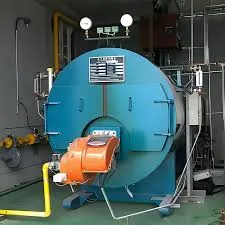
Oct . 07, 2024 13:50 Back to list
steam boiler types
Understanding Steam Boiler Types
Steam boilers are vital components in various industrial processes and heating systems, playing a crucial role in generating steam for power generation, heating, and other operational needs. Understanding the different types of steam boilers is essential for selecting the right one for specific applications.
Fire-Tube Boilers
One of the most common types of steam boilers is the fire-tube boiler. In this design, hot gases produced from the combustion of fuel pass through tubes that are surrounded by water. As the gases travel through the tubes, they transfer heat to the water, converting it into steam. Fire-tube boilers are widely used due to their simple construction and efficient operation. They are typically favored for low to medium-pressure applications and can be easily maintained. However, they may not be suitable for high-pressure requirements due to their design limitations.
Water-Tube Boilers
In contrast to fire-tube boilers, water-tube boilers feature tubes filled with water in which heat is transferred from hot gases surrounding them. This design allows water-tube boilers to operate at higher pressures and temperatures, making them ideal for large-scale industrial applications, such as power plants. They have the advantage of quicker steam generation and improved heat transfer efficiency. However, they require more complex maintenance and are typically more expensive to install.
steam boiler types

Electric Boilers
Electric boilers have gained popularity due to their efficiency and environmental considerations. These boilers utilize electric heating elements to generate steam. They are compact, easy to install, and are often used in locations where conventional fuel sources are infeasible. Electric boilers are most suitable for applications requiring moderate steam production and can be particularly useful in commercial settings or areas with stringent emission regulations.
Biomass Boilers
As the world shifts towards sustainable energy sources, biomass boilers have emerged as an eco-friendly alternative. These boilers generate steam using organic materials, such as wood pellets, agricultural residues, or waste products. Biomass boilers can significantly reduce carbon emissions and contribute to a circular economy. However, they require careful management of fuel supply and may necessitate elaborate fuel-handling equipment, making them more complex than conventional gas or oil-fired boilers.
Conclusion
The selection of a steam boiler type depends on multiple factors, including application requirements, fuel availability, operational efficiency, and environmental considerations. Fire-tube boilers are excellent for low-pressure applications, while water-tube boilers serve high-pressure needs efficiently. Electric and biomass boilers offer alternatives that fit into modern energy practices and environmental goals. Understanding these types and their applications is crucial for industries aiming to optimize their operations while adhering to safety and regulatory standards. As technology advances, we can expect continued innovations in steam boiler designs, improving efficiency and sustainability in industrial processes.
-
High-Efficiency Commercial Oil Fired Steam Boiler for Industry
NewsJul.30,2025
-
High-Efficiency Biomass Fired Thermal Oil Boiler Solutions
NewsJul.30,2025
-
High Efficiency Gas Fired Thermal Oil Boiler for Industrial Heating
NewsJul.29,2025
-
High-Efficiency Gas Fired Hot Water Boiler for Sale – Reliable & Affordable
NewsJul.29,2025
-
High Efficiency Biomass Fired Hot Water Boiler for Industrial and Commercial Use
NewsJul.29,2025
-
High-Efficiency Biomass Fired Hot Water Boiler for Industrial Use
NewsJul.28,2025
Related PRODUCTS






















